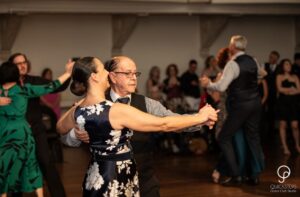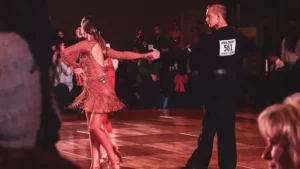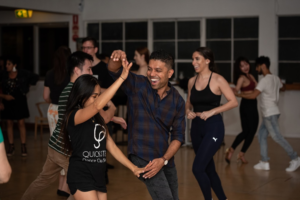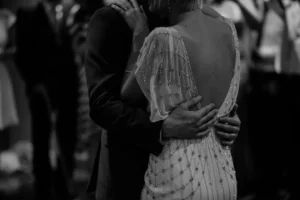What is Ballroom dance?
A long time ago, ‘ballroom’ dances were any type of partner dances which were enjoyed both socially and competitively. This makes sense because they were organizing dance events in large ball-rooms. However, as dance evolved we came up with a need to group all those dances we have. Two main groups are Ballroom and Latin dances.
They mainly differ in techniques applied to them and the way they travel on the dance floor. Ballroom dance is characterized by traveling around the dance floor (in an anti-clockwise direction) and therefore, it takes more space to dance it. There are also specific techniques used which result in dance look classy and elegant.
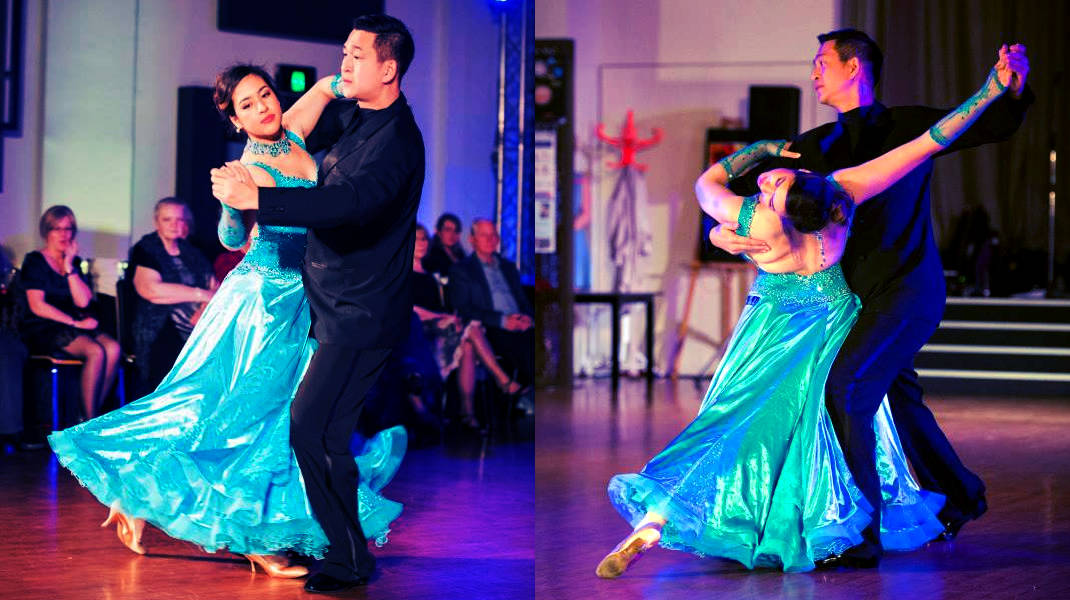
There are 5 dances in Ballroom group and these are:
-
Waltz
-
Viennese Waltz
-
Ballroom Tango
-
Foxtrot
-
Quickstep
Waltz
Difficulty: 1/5
Pro tip: Master waltz to make learning Viennese waltz easier.
Facts about waltz:
-
the King of Dances
-
you’ll recognize it by popular timing 1, 2, 3 – 1, 2, 3
-
it was and still is widely used as a bridal dance because it’s romantic and elegant, but it’s less common today because there are not many modern songs that are good for waltz
-
although it’s also known as Slow Waltz, advanced figures add faster pace resulting in dynamic dancing despite slow music tempo
-
slow elegant moves and poses are used as a contrast to fast pace
Viennese Waltz
Difficulty: 5/5
Pro tip: Make it easier to learn by mastering waltz first.
Facts about Viennese waltz:
-
the original form of Waltz and the oldest ballroom dance
-
in Europe, Waltz still refers to the original Viennese Waltz and not the Slow (or English) Waltz
-
it can be tricky to pick up the moves, so it’s not advised for beginners to start dancing with it
-
Slow Waltz (90 beats per minute) is really much slower than Viennese Waltz (180 beats per minute)
Ballroom Tango
Difficulty: 2/5
Pro tip: Learn it before Argentine tango which is on the higher difficulty scale.
Facts about ballroom tango:
-
one of the most unique and recognizable dances
-
originates from Argentina and Uruguay, but Ballroom type of Tango uses very different techniques
-
sharper alternative of its cousin Argentine Tango
-
it’s often used as a tool when teaching other dances
What to know more? If you are curious about this dance you can discover some modern songs you can tango to and where you can dance it in Adelaide, read more on our page dedicated only to Tango.
Foxtrot
Difficulty: 2/5
Pro tip: Make your life easier by learning foxtrot before quickstep.
Facts about foxtrot:
-
similar to Waltz, but rhythm is 1, 2, 3, 4
-
it was originally danced to blues music by African American dancers
-
dancing looks smooth with continuous flowing movements across the dance floor
-
Foxtrot is a slower sibling of Quickstep
Quickstep
Difficulty: 3/5
Pro tip: To make learning it easier, you can preface it with Foxtrot.
Facts about quickstep:
-
combination of foxtrot and early version of swing dancing
-
upbeat music makes it a good dance for formal and informal events
-
althought dancing is energetic and dinamic, Quickstep is elegant and glamorous
-
dancers should appear very light on their feet
Why learn Ballroom dances?
There are a lot of benefits that come with learning Ballroom dances. It may appear strict and full of class, but it’s really all about fun!
-
Slower dances like Waltz, Tango and Foxtrot can help you tone and strength your body.
-
Fast paced Quickstep will help you burn calories and improve your stamina.
-
It will improve your posture and balance in every day life


